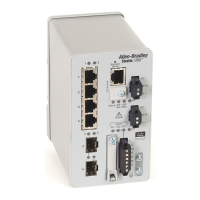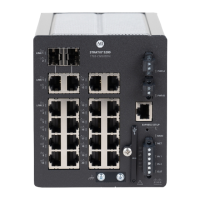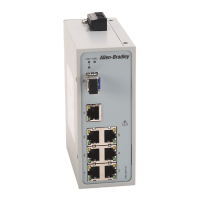296 Rockwell Automation Publication 1783-UM007G-EN-P - February 2017
Chapter 7 Configure Switch Features
You can add, edit, and delete NTP associations in the table area on the NTP
page. You can add multiple NTP servers.
To add an association, follow these steps.
1. Click Add.
2. In the IP Address field, specify one of the following:
• For a peer association, type the IP address of the peer providing, or
being provided, the clock synchronization.
• For a server association, type the IP address of the time server
providing the clock synchronization.
3. To make the peer or server the preferred one that provides
synchronization, check the Prefer checkbox.
4. Click OK.
Table 75 - NTP Fields
Field Description
Clock Status Displays the current status of NTP clock synchronization:
• Synchronized
• Unsynchronized
Stratum Displays the NTP stratum of this system.
The stratum indicates how many NTP hops away a device is from an authoritative time
source.
Reference Displays the address of the peer that the system is synchronized with.
NTP Up Time Displays the uptime of the NTP entity.
Resolution Displays the time resolution of the underlying operating system in milliseconds.
Reference Time Displays the reference time stamp.
Clock Offset Displays the offset of the system clock to the synchronized peer in milliseconds.
Root Delay Displays the total delay along the path to the root clock in milliseconds.
Root Dispersion Displays the number that indicates the maximum error relative to the primary reference
source at the root of the synchronization subnet in milliseconds.
Peer Dispersion Displays the number that indicates the maximum error relative to the synchronized peer
(in milliseconds).
System Poll Interval Displays the poll interval of the peer.
Last Update Displays the time the system last updated its NTP information.

